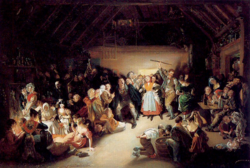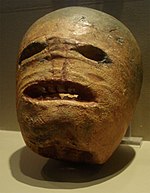83,548명의 시민기자가 870,022개의 기사를 작성하였습니다.시민기자 가입하기
청주 2.5℃
문화
무교회주의 기독교 창시자 우치무라 간조
우치무라 간조(內村鑑三) 전집 (전10권)
01.11.13 15:00l최종 업데이트 01.11.15 19:54l박상익(clio53)
크게l
작게l
인쇄l
URL줄이기
스크랩
13
좋은기사 원고료주기
공감1 댓글댓글달기
1.
내가 우치무라 간조(內村鑑三, 1861-1930)의 저작을 처음 만난 것은 대학생이던 1974년의 일이었다. 그보다 1년 전부터 선배의 권유에 이끌려 어느 선교 단체에서 성경 공부를 하기 시작한 나는 당시 머리가 온통 뒤죽박죽이 되어 있는 상태였다. 기독교를 전혀 모르는 '이교도'였던 내게, 성경이 보여준 세계는 카프카의 말처럼 '머리를 마구 두들겨대는' 것이었다. 의미도 없이, 지향도 없이 바람 부는 대로 망연히 떠다니던 나의 정신은 일대 문화 충격(culture shock)을 겪은 셈이었다.
사교적인 성격이 못되는 데다 누군들 내 고민을 이해해주랴 싶은 마음에, 도서관이나 서점을 기웃거리며 도움이 될 만한 책을 사냥하는 일에 나서게 되었다. 친구들과의 교제도 거의 끊다시피 하고, 시간이 나면 일삼아서 광화문, 종로, 청계천 일대의 서점들을 뒤지고 다녔다.
그 날도 여느 때처럼 서점들을 드나드는 중이었다. 그러다가 종로서적에서 우연히 단행본으로 출간된 우치무라 간조의 <기독교문답>과 <나는 어떻게 크리스천이 되었는가>라는 책을 발견하고 사서 읽게 되었다. (두 책은 각각 <전집> 제1권과 제2권에도 수록되었다.) 동양인의 입장에서 이질적인 기독교를 받아들였다는 점에서 공감의 폭이 넓어지면서 무교회주의에 강하게 끌리게 되었다. 비기독교 문명에 속한 동양인으로서 기독교로 개종을 하면서 겪었던 우치무라의 정신적 역정(歷程)이 내게도 호소력을 가졌던 것으로 보인다.
나는 우치무라와의 만남을 계기로 우리나라에도 무교회주의 모임이 있음을 알게 되었고, 곧 서울 종로 2가 YMCA에서 노평구(盧平久) 선생이 주관하는 무교회 성서연구회에 참여하게 되었다. 노평구 선생은 우치무라의 제자였던 김교신(金敎臣, 1901-1945) 선생의 제자로서, 무교회주의의 제3세대 지도자에 해당하는 인물이었다.
무교회 집회는 학문적 노력을 적극적으로 장려하는 분위기였으므로, 대학에서 역사를 공부하던 나는 성경을 배우면서 자연스럽게 신앙과 학문의 일치를 모색하게 되었다. 그 후 대학원에서 전공을 서양사로 택하고, 논문 주제로 청교도 시인 존 밀턴을 택한 것도 이런 배경에서였다. 무교회 집회에서 성경을 공부하고 단테, 밀턴 독서회에 참석하던 그 시절이 내게는 진정한 의미의 대학생활이었던 셈이다.
이 무렵 <우치무라 간조 전집>(지금은 절판된 1975년 설우사 판)에 수록된 <기독교 신도의 위안>, <구안록>, <전도의 정신>, <후세에의 최대유물>, <종교좌담>(이상 <전집> 제1권), <지인론(地人論)>, <종교와 문학>, <시인 휘트먼>, <루터전(傳) 강연>(이상 <전집> 제2권), <소감>(<전집> 제3권) 등을 읽었다. 목차를 비교해보니 이번에 새로 나온 <전집>은 종전의 설우사 판과 내용상으로는 동일하되, 세로쓰기를 가로쓰기로 바꾸는 등 시대 변화에 맞춰 편집상의 수정을 가한 것으로 보인다.
2.
우치무라는 <전도의 정신>에서 전도자의 자질로서 다방면의 세상 지식이 필요하다고 말한다. 전도자는 우주 만물에 관한 하나님의 진리를 세상에 나타내보일 직책에 있으므로 전도자가 몰라도 좋을 지식은 이 넓은 우주에 없다는 것이다. 지식이 넓어짐에 따라 하나님을 아는 것이 더욱 깊어지고 지식이 더해짐에 따라 하나님의 뜻을 더욱 밝히 알게 된다.
그러므로 전도자에게는 다른 누구보다도 학문의 필요성이 절실하다. 신학만을 아는 전도자는 신학생의 좋은 선생은 될 수 있을지 모르나, 목수, 미장이, 농민, 서민, 학자, 정치가 등의 지도자로서는 아무 가치도 없다는 것이다. 우치무라는 특히 다음과 같은 분야의 지식을 적극적으로 권한다.
첫째로, 경제학과 사회학 등 사회과학을 연구할 필요가 있다. 전도자는 사회의 지도자이며 사회를 하나님이 정하신 진리로 이끌어가려는 것이므로 이 사회를 지배하는 원리와 법칙을 몰라서는 안 된다는 것이다.
둘째로, 자연과학을 연구할 필요가 있다. 과학은 물질의 원리와 법칙을 연구하는 것이므로 이를 배워서 하나님의 거룩한 뜻과 법칙을 깨달을 수 있다는 것이다.
셋째로, 인문학, 특히 역사학을 공부해야 한다. 역사학은 인류 발달의 기록이며 하나님의 섭리를 가장 밝히 나타내 보이는 것이다. 역사학은 인간성의 폭과 깊이에 대한 이해를 높이므로 관대한 정신을 갖게 해준다. 역사학은 국민은 인류보다 작은 것이며 인류 전체의 발전은 한 국민의 발전보다 긴요한 것임을 가르쳐 준다. 그러므로 전도자는 역사학을 통해 시야를 넓힐 수 있고 인류의 연대(solidarity)를 알게 되며 서로 돕는 마음을 배울 수 있다.
끝으로, 이상적인 전도자가 되려는 사람에게는 성서의 원어를 비롯하여, 충분한 성서 연구가 필요하다. 성서 연구 없이 전도에 나서려는 것은 수학 지식 없이 천문학을 연구하는 것처럼 터무니없는 일이다.
요컨대 우치무라는 ‘하나님’을 알기 위해 성경을, ‘사람’을 알기 위해 역사와 사회과학을, 그리고 ‘자연’을 알기 위해 과학을 연구할 것을 주장한다. 우치무라는 이 세 가지가 합하여 트리니티(三位)를 이루며, 하나가 빠지면 다른 나머지도 충분히 이해할 수 없게 된다고 말한다. 셋이 합하여 비로소 완전하고 건전한 지식을 구비하게 된다는 것이다.
우치무라의 이런 관점은 오늘의 한국 현실에 많은 빛을 던져준다. '지성'이니 '이성'이니 하는 말을 쓰면 우선 교역자들부터 안색이 굳어지고, 젊은 대학생들이 교회에서 학문을 거론하면 '지적 교만'이란 딱지를 붙여 백안시하기까지 하는 한국 교회는 그 '나무'에 합당한 '열매'를 맺고 있는 것으로 보인다.
사회적 책임보다는 개인의 기복만을 추구하는 신앙인이 양산되고, 최소한의 기초질서마저 분별 못하는 그리스도인들이 자신들의 '신앙'을 완장처럼 휘둘러댐으로써, 본보기가 되기는커녕 오히려 세인의 눈살을 찌푸리게 만들고 있다.
중세 말기의 타락한 카톨릭 교회를 연상케 하는 후안무치한 교회 세습이 자행되는가 하면, 인간과 사회에 대한 최소한의 동정심마저 결여한 광신도들은 이슬람 근본주의 못지않은 파괴와 폭력을 자행한다. 사찰에 불을 지르고 단군상의 목을 잘라내는 직업종교가들의 엽기적 행각은 기독교 근본주의의 수많은 병폐 중 극히 일부분에 불과한 것이다.
3.
우치무라 간조는 무교회주의의 창시자로 불린다. 우치무라가 생각한 무교회주의는, 서양에서 수입된 교파 기독교가 아닌, 일본인의 마음속에 뿌리 내린 기독교만이 일본인을 구원할 수 있다는 주장을 담고 있다. 우치무라는 독일을 구원한 기독교가 루터에게서 나오고, 영국을 구원한 기독교가 존 녹스와 밀턴에게서 나왔듯이, 일본을 구원할 기독교는 일본인에게서 나와야 할 것이라고 주장했다.
서양의 역사와 전통 속에서 왜곡, 굴절된 교파 기독교는 이질적인 전통을 가진 일본의 토양에는 적합하지 못하다는 것이 우치무라의 판단이었다. 그러므로 그는 비록 일본이 외국에서 진리의 싹을 받았을지 모르지만, 일본인의 마음 깊은 곳에서 배양되지 않은 진리를 가지고 우리 자신과 우리 동포를 구원할 수는 없다고 주장했다. 일본 기독교는 “일본인 특유의 관점에서 해석된 기독교의 진리”여야 하며, “어떤 외국인의 중재도 없이 하나님으로부터 일본인들이 직접 받은 기독교라야 한다”는 것이다.
우치무라는 철저한 자립정신이야말로 기독교의 중요한 덕목 중 하나라고 확신했다. 그러므로 외국 선교사들이 진정으로 일본 그리스도인들을 위한 계획을 수립하기 원한다면 먼저 일본의 기독교가 재정적으로나 신학적으로 자립할 수 있도록 배려해야 한다고 말했다.
실제로 우치무라는 신앙생활을 하기 시작했을 때부터 독립적인 사람이 되겠다고 결심했다. 기독교 신앙을 가졌지만 외국 선교사들의 명령에 따라 살지 않을 것이며, 외국인에게 돈을 빌려 쓰면서까지 선교 사역을 하지 않겠다고 결심한 것이다. 이렇듯 독립적인 신앙을 강조한 우치무라가 개인주의를 존중한 것은 너무나 당연한 일이었다.
- “대부분의 사람들은 개인주의와 이기주의를 혼동한다. 그러나 이 둘은 전혀 별개의 것이다. 전자는 귀중한 것이고 후자는 비천한 것이다. 나는 개인주의는 존중하지만 이기주의는 전적으로 배척한다. 개인주의는 개인을 존중한다. 자기를 존중함과 동시에 또한 남도 존중한다. ……개인주의는 그리스도인으로서 가져서 결코 부끄러운 것이 아니다.” (<전집> 제10권)
3년 반의 미국 유학 생활을 마치고 1888년 5월에 귀국할 때, 우치무라는 일본을 하나님의 나라로 만들기 위해 자기 민족을 섬기겠다는 고상한 야망을 품고 있었다. 우치무라는 '두 개의 J'만을 사랑한다고 말한다. 하나는 예수(Jesus)이고, 다른 하나는 일본(Japan)이었다. 그는 자신의 신앙이 중심점이 하나뿐인 '원'이 아니라, 예수와 일본이라는 두 개의 중심을 가진 '타원'이라고 주장했다. 우치무라의 '두 개의 J'는 예수의 '주 너의 하나님을 사랑하라'는 제1계명과, '네 이웃을 네 몸 같이 사랑하라'는 제2계명을 결합시킨 것으로 해석할 수 있을 것이다.
그가 도쿄의 제일고등중학교(오늘날의 도쿄 대학교 교양학부)에서 교편을 잡고 있던 1891년 중대한 사건이 발생했다. 그 해 1월 9일, 천황이 서명한 교육칙어를 천황의 초상화 옆에 걸어놓고 그 앞에 경의를 표하는 의식이 거행되었는데, 우치무라는 60명의 비기독교 교사진과 천 명이 넘는 학생들이 지켜보는 앞에서 양심에 따라 그 자리에 선 채 혼자 절을 하지 않았다. 우치무라의 행동에 대한 비난은 그가 재직하고 있던 제일고등중학교 학생과 교사들 사이에서 먼저 나왔다. 심지어 우치무라의 집을 습격해 돌을 던지는 사건까지 있었다.
매스컴은 재빨리 이 사건을 취재하여 '우치무라 간조 불경사건(不敬事件)'으로 전국에 퍼뜨렸다. 우치무라의 이름은 반역자의 대명사로서 전국적으로 널리 알려지게 되었고, 여관에서 투숙을 거부당할까봐 여행을 하는 동안에는 가명을 써야 할 정도였다. 이 와중에 우치무라는 폐렴에 걸려 죽음의 위기에까지 이르렀다가 2개월 만에 가까스로 회복은 되었으나 이미 실직자 신세였다.
그 동안 아내 가즈코(加壽子)는 박해 속에서도 잘 견디면서 우치무라를 간호했는데, 이번에는 그녀 자신이 같은 병으로 병석에 누워 그 해 4월 19일에 세상을 떠나고 말았다. 우치무라는 직업을 잃은 직후 아내까지 잃게 되어 그 비통함이 극에 달했다.
1893년 그는 <기독교 신도의 위안>이라는 제목의 책을 저술했다. 이른바 '불경사건'이 있은 지 2년 뒤의 일이었다. 이 책의 제 2장에는 '고향 사람들로부터 버림을 받았을 때'라는 제목이 붙어 있는데, 그것은 바로 제일고등중학교에서 있었던 사건을 가리킨다. 그리고 이 책의 제 1장에는 '사랑하는 사람을 잃었을 때'라는 제목이 붙어 있는데, 이것은 물론 아내 가즈코의 죽음을 뜻한다.
'불경사건은 우치무라 개인에게 뿐만 아니라 일본 근대사의 관점에서도 매우 큰 의미를 갖는 사건이었다. 대일본제국 헌법에서 '신성불가침'이라고 규정한 천황에 대해 한 개인이 현세를 초월하는 보편적 존재(하나님)를 근거로 천황의 신성을 부정하는 행동을 취한 것이다. 이 사건은 '인간'을 신격화하는 관행에 대해 'No!'라고 할 수 있음을 세상에 보여준 사건이자, 현세와 지상의 모든 것을 상대화 할 수 있는 절대적 진리가 엄존함을 과시한 사건이었다.
<기독교 신도의 위안>은 '불경사건' 후 우치무라가 겪은 쓰라린 체험을 바탕으로 일궈낸 종교사상의 결정(結晶)이다. 우치무라의 기독교적 세계관과 인간관은 이 책에서 거의 확립되었다고 해도 좋을 것이다. <기독교 신도의 위안>을 책장이 찢어질 때까지 애독했다는 일본의 소설가 마사무네 하쿠초(正宗白鳥, 1875-1962)는 이 책을 일본 현대문학 최고의 사소설(私小說)로 평가하기도 했다.
4.
우치무라 간조가 주관하던 성서연구회에는 당시 도쿄 고등사범학교에 다니던 조선인 유학생 김교신이 출석하고 있었다. 1901년 함흥에서 태어난 김교신은 함흥 공립농업학교에 다니던 1919년에 3.1운동에 참여한 바 있었다. 김교신은 훗날 자신이 일본 유학길에 오르면서 “불공대천(不共戴天)의 철심(鐵心)을 품고 동해를 건넜노라”고 당시의 심경을 술회하고 있다. 조국에 대한 뜨거운 열정을 불태웠던 김교신의 눈에 우치무라의 모습은 어떻게 비쳤을까?
“국적(國賊)으로 전 국민의 비방 중에 매장된 지 반생여일(半生餘日)에 오히려 그 일본을 저버리지 못하는 애국자의 열혈(熱血), 이것이 무엇보다도 힘있게 나를 끌었었다. 조선에 만일 그와 같은 애국자가 출현했더면 쏟아 바쳤을 경모(敬慕)의 염(念)을 전혀 저에게 봉정(奉呈)했다.”
김교신은 우치무라를 가리켜 “발톱 끝에서 머리털 끝까지 애국의 화신”이라고 표현했다. 김교신은 1921년 1월부터 7년 동안 우치무라 문하에서 신앙을 배웠다. 1927년 귀국한 김교신은 월간지 <성서조선>의 주필을 맡아 15년 동안 전도 활동을 했으나 이른바 '성서조선사건'으로 제158호(1942년 3월호)를 마지막으로 잡지가 일제에 의해 폐간 조치되기에 이른다.
이 사건으로 한국 및 일본에서 많은 독자들이 검거되었고, 특히 주필 김교신 및 함석헌, 송두용, 류달영, 장기려 등 13인은 서대문 형무소에서 만 1년 간 옥고를 치러야만 했다. 석방된 후 김교신은 흥남의 일본질소비료공업주식회사에서 5천 명 한국인 근로자들을 보살피다가 발진티푸스에 감염되어, 염원하던 광복을 넉 달 앞둔 1945년 4월 25일 홀연히 세상을 떠나고 말았다. 만 44세의 젊은 나이였다.
'그리스도를 만난 조선의 선비'로 불리는 김교신은 죽는 날까지 신사참배는 물론, 창씨개명도 하지 않았다. '성서조선사건'에서도 볼 수 있듯이 그는 추호도 일제에 굴복하지 않았다. 그럼에도 불구하고 김교신은 일본인 스승으로부터 기독교 신앙을 배웠다는 이유 때문에, 일제하 한국인 교역자들로부터 비아냥거림을 당하곤 했다.
그러나 일제의 단말마적인 압제 하에서 천주교는 물론이고, 한국의 개신교 교단 거의 전부가 천황과 일본제국주의에 대한 충성을 맹세했을 때, 조국과 민족 앞에 끝까지 지조를 지키며 한국 기독교의 자존심을 세운 것은 김교신을 비롯한 무교회주의자들이었다. 실로 역사의 아이러니가 아닐 수 없다.
그러나 철저한 독립 신앙을 강조한 스승 우치무라의 가르침을 생각한다면 수수께끼는 곧 풀린다. 일본 기독교가 “일본인 특유의 관점에서 해석된 기독교의 진리”여야 하며, “어떤 외국인의 중재도 없이 하나님으로부터 일본인들이 직접 받은 기독교라야 한다”고 주장한 스승의 뜻을 통찰한 김교신은, 한국 기독교가 “한국인 특유의 관점에서 해석된 기독교의 진리”여야 하며, “어떤 외국인의 중재도 없이 하나님으로부터 한국인들이 직접 받은 기독교라야 한다”고 확신했던 것이다.
한국인의 마음 깊은 곳에 뿌리를 내리지 않은 진리로써 우리 자신과 우리 동포를 구원할 수는 없다는 주장이다. 김교신의 표현을 직접 빌자면, 한국인의 기독교는 '김치 냄새나는 기독교'이어야만 했던 것이다.
우치무라는 일기장의 이곳저곳에서, 자신의 가르침을 가장 잘 이해하고 있는 것은 한국 학생들이며 일본인이 조선인에게 배울 점이 많다는 것, 그리고 자신에게 여러 해 동안 배우고 감사하며 귀국하는 조선인 학생들을 배웅하는 것만으로도 성서연구회를 해온 보람이 있다고 자랑스러워했다. 그는 일본의 독립과 자유가 귀한 만큼 한국의 독립과 자유도 귀하다고 말했다. 우치무라는 근대 일본인으로서는 보기 드문 친한파였다.
저작권자(c) 오마이뉴스(시민기자), 무단 전재 및 재배포 금지


